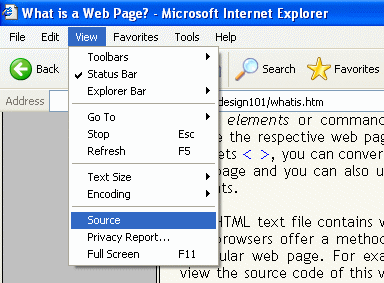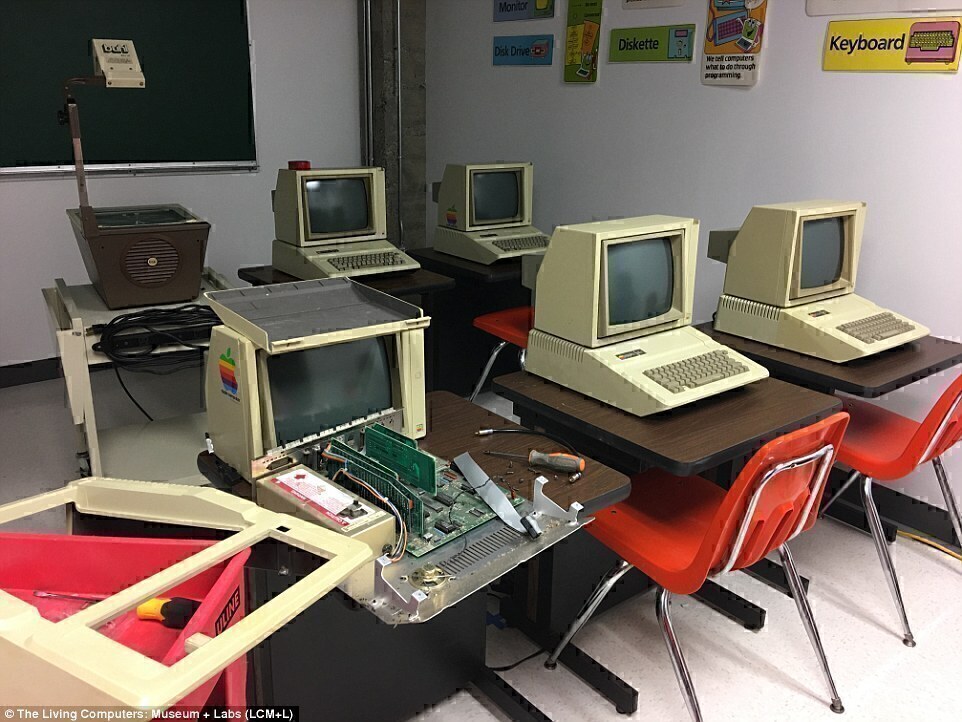This is the second post, in a two-part series. If you missed Part 1, check it out here first!
When I was a young computer nerd, back in the early days of a consumer-friendly Internet, formal computer education in high school was limited to whatever rudimentary understanding our middle-aged teachers could piece together for themselves to pass on. But there was one tool that taught me more about web development than any book or class or teacher ever could: View > Source.
 You can do it now, although the output is significantly less meaningful or helpful on the modern web. Dig around your Browser’s menus and it’s still there somewhere: the opportunity to examine the source code of this, and other websites.
You can do it now, although the output is significantly less meaningful or helpful on the modern web. Dig around your Browser’s menus and it’s still there somewhere: the opportunity to examine the source code of this, and other websites.
It was from these menus that I learned my first simple tricks in HTML, like the infamous tag, and later the more complex capabilities offered through a simple programming language called Javascript that increasingly became part of the Web.
Javascript and the web’s DOM (Document Object Model) taught me Object Oriented Programming when my “college level” computer science course was still teaching procedural BASIC. Object Oriented Programming, and the web as a development platform, have defined my career now 25 years hence. I owe an unpayable debt to the View > Source menu. It was the equivalent of “popping the hood” on a car, and it allowed a generation to learn how things work. Your iPhone doesn’t do that – in fact, today’s Apple would prefer if it people would stop trying to ever open their hardware or software platforms.
This, I assert, is why people fell in love with the Apple II, and why it endures after 40 years. It was a solid consumer device that could be used without needing to be built or tinkered with, but its removable top invited you to explore. “Look at the amazing things this computer can do… then peak inside and learn about how!”
As soon as our son was old enough to hold a screwdriver, he was taking things apart to look inside. I’m told I was the same way, but as parents Nicole and I had a plan: we’d take our kid to Goodwill and let him pick out junk to disassemble — rather than working electronics from around the home! I consider it a tragedy that some people outgrow such curiosity. Dr. Buggie has not – in fact, in my brief conversation with him, I think curiosity might be one of his defining characteristics…
Have PHD, Will Travel
Some time in the early 70s, Stephen Buggie completed his PHd in Psychology from the University of Oregon. Finding a discouraging job market in America, Buggie decided to seek his fortunes elsewhere. The timeline from there is a little confusing: he spent 12 years in Africa, teaching in both Zambia during its civil war (he vividly recalls military helicopters landing beside his house) and Malawi. He was in America for a sabbatical in 1987, where he saw computers being used in a classroom, and at some point in there he taught at the University of the Americas in Mexico, who were early adopters of the Apple II for educational use. His two sons were born in Africa, and despite their skin color, their dual citizenship makes them African Americans – a point he was proud to make. He taught 5 years in South Carolina, before joining the University of New Mexico on a tenure track. He maintains an office there as a Professor Emeritus (although rarely visits — especially in the age of COVID) and still has his marking program and years of class records on 5.25” floppy disks.

Buggie found community amongst Apple II users in the 80s and 90s. Before the World Wide Web there were trade magazines, Bulletin Board Systems and mail-in catalogs. Although there was no rating system for buyers and sellers like eBay has today, good people developed a reputation for their knowledge or products. As the average computer user moved to newer platforms, the community got smaller and more tight-knit. Buggie found a key challenge in maintaining older hardware was the power supplies, and scavenged for parts that were compatible, or could be modified to be compatible, and bought out a huge stock – one he is still working through, as he ships them to individual hobbyists and restorers decades later. His class schedule made it difficult for him to go to events, but retirement allowed him to start attending — and writing about KansasFest, and he still talks excitedly about the fun of those in-person interactions, and the value he got from trading stories, ideas and parts with other users.
To be certain, Buggie’s professional skills are in the psychology classroom. He doesn’t consider himself to be any sort of computer expert — he’s more like a pro user who taught himself the necessary skills to maintain his tools. And maybe this is the second theme that emerged in our conversation: like the virtue of curiosity, there is an inherent value in durability. This isn’t commentary on the disposable nature of consumer products so much as it is on the attitudes of consumers.
We shape our tools, and thereafter our tools shape us
My dad worked with wood my whole life. Sometimes as a profession, when he taught the shop program at a school in town. Sometimes as a hobby, when he built himself a canoe. Sometimes out of necessity, when my parents restored our old house to help finance their missionary work (and the raising of three kids.) His tools were rarely brand new, but they were always well organized and maintained. He instilled in me a respect for the craft and in the artifacts of its execution.
Computers are tools too – multi-purpose ones that can be dedicated to many creative works. When we treat them like appliances, or use them up like consumable goods, the disrespect is to ourselves, as well as our craft. Our lack of care and understanding, our inability to maintain our tools beyond a year or two, renders us stupid and helpless. We cease to be users and we become the used – by hardware vendors who just want us to buy the latest versions, or credit card companies that want to keep us in debt, or by some imagined social status competition…
In those like Dr. Buggie who stubbornly refuse to replace a computer simply because it’s old, I see both nostalgia and virtue.
The nostalgia isn’t always positive – I’ve seen many Facebook posts from “collectors” who have storage rooms full of stacked, dead Macintosh computers that they compulsively buy despite having no use for, perhaps desperate for some prior stage of life, or to be able to claim a part in the computing revolution of yester-year that really did “change the world” in ways we’re still coming to grips with. There is a certain strangeness to this hobby…
But there is also virtue in preserving those sparks of curiosity, those objects that first invited us to learn more, or to create, or to share. And there is virtue in respecting a good tool, in teaching the next generation to steward well the things we use to propel and shape our passions or careers or the homes we build for our families.
Fading Lightning
I joke with my wife that our rec room is like a palliative care facility for dying electronics: my 1992 Laserdisc player is connected to a 2020-model flatscreen TV and still regularly spins movies for us. I still build apps for a mobile platform that was discontinued in 2011 using a laptop sold in 2008. In fact, these two posts about the Apple II were written on a PowerBook G3 from 2001. Old things aren’t necessarily useless things… and in fact, in many ways they provide more possibility than the increasingly closed computing platforms of the modern era.
In an age where companies sue customers who attempt to repair their own products, there is something to be said for an old computer that still invites you to pop the top off and peer inside. It says that maybe the technology belongs to the user – and not the other way around. It says that maybe those objects that first inspired us to figure out how things works are worthwhile monuments that can remind us to keep learning – even after we retire. It says that maybe the lessons of the past are there to help us teach our kids to shape their world, and not to be shaped by it…




One thought on “Maintainers of Lightning – Part 2”